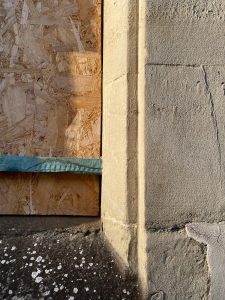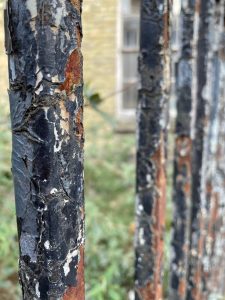Our urban landscapes are architecturally rich and their buildings contribute to the familiar and comforting structure of our towns and cities. Over recent years economic downturns and external events such as Brexit and COVID, have all impacted on the way in which buildings are able to continue to be used, or not. Now empty shop units, boarded up commercial buildings and decaying houses, are a familiar feature of our cities, towns and villages.

 What can be done? Studies have shown that demolition is not a good or sustainable solution. Demolition not only produces millions of tonnes of waste, but it is estimated that one third of the waste produced in the UK every year comes from demolition and construction. Recent research on behalf of Historic England reveals that there are potentially significant carbon savings to be made from reusing rather than demolishing existing buildings. Their article Buildings must be Recycled and Reused to Help Tackle Climate Change published in February 2020, makes a compelling case, stating that:
What can be done? Studies have shown that demolition is not a good or sustainable solution. Demolition not only produces millions of tonnes of waste, but it is estimated that one third of the waste produced in the UK every year comes from demolition and construction. Recent research on behalf of Historic England reveals that there are potentially significant carbon savings to be made from reusing rather than demolishing existing buildings. Their article Buildings must be Recycled and Reused to Help Tackle Climate Change published in February 2020, makes a compelling case, stating that:
This early research shows that sympathetically upgrading and reusing existing buildings, rather than demolishing and building new, could dramatically improve a building’s energy efficiency and would make substantial energy savings because the CO₂ emissions already embodied within existing buildings would not be lost through demolition.
Viewed from the perspective of sustainability, it is also true that constructing new buildings has high energy and materials costs.
We believe that the answer lies in sympathetically upgrading and reusing existing buildings. This is also known as adaptive reuse and is a form of development where old buildings are repurposed, giving them a new lease of life and bringing new energy to communities that might otherwise be in decline. In our role as building consultants, we have worked locally on projects to convert large houses into flats or spaces suitable for multiple occupancy. This breathes life back into an empty building.
We know that the greenest building is the one that already exists. The materials required for repurposing are significantly less than those required for a new build, as are the energy requirements. Refurbishment also provides opportunities to update and upgrade insulation, heating and plumbing, windows and doors, and to create buildings that are more environmentally friendly and economical to run.
By opting to repurpose buildings, a community can be responsive to its changing housing and business needs, whilst at the same time conserving land use. It also means that a local identity is preserved and the sense of place.

As we practise in and around the beautiful, medieval city of Salisbury, we are acutely aware of the benefits of adaptive reuse for our built environment and for our community.
If you need our help to rejuvenate your domestic or commercial building, please do not hesitate to contact us.
